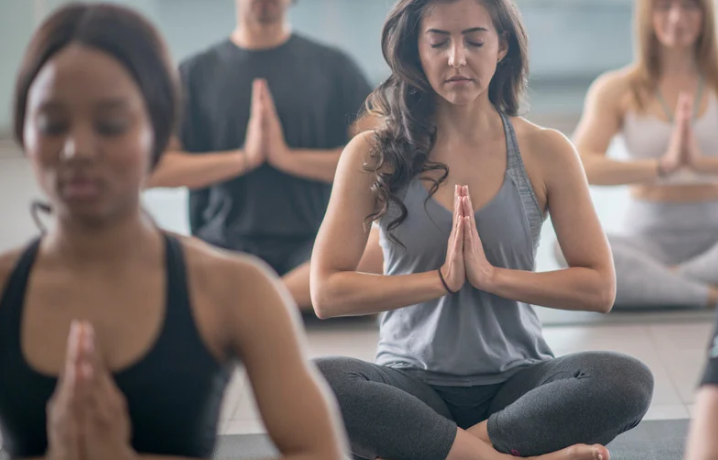When people begin a fitness program, they understandably have lots of questions, from how to perform certain moves to which exercises are most effective. One question that everyone seems to ask is how to breathe properly when working out.
I know what you're thinking. Who would need instructions on how to breathe? Breathing doesn't take thought; it’s involuntary, just like blinking your eyes. Shouldn’t we stop thinking about it and just let it happen? Yes and no. Trainers or exercise instructors regularly remind their clients to breathe because many people tend to hold their breath when they work out.
But holding your breath isn't the only issue. During exercise, breathing can often be too fast, too slow, too deep, or too shallow. Sometimes people even inhale and exhale at the wrong times. While this won’t make or break your workout, it can affect performance, technique, and your mind-body connection.
Breathing Basics
In everyday life, breathing comes naturally and doesn’t require much thought. We inhale to get oxygen and exhale to release carbon dioxide. But few people use their lungs to their full capacity. At rest, most people only use 10 to 15 percent of their lung capacity due to quick, shallow chest breaths.
Exercise increases your body’s oxygen demand and produces more carbon dioxide. This naturally speeds up your breathing. But if you’re new to working out, don’t take this process for granted. Becoming aware of your breath can make workouts more comfortable, prevent dizziness or fainting, and help you perform better. Here’s how to breathe effectively during different types of exercise.
Cardio (Aerobic) Basics
Cardio exercise like walking, running, biking, or spinning requires deep, steady breathing. Whether you breathe through your nose, mouth, or both is a personal preference, but most people find mouth breathing provides more oxygen. Try to keep your breathing deep and relaxed. Diaphragmatic, or "belly," breathing is ideal. This means breathing deeply enough that your stomach rises and falls, not your chest.
To practice, relax your abdominals, avoid sucking in your stomach, and focus on filling your belly as you inhale. Exhale fully and continue at a pace that suits your workout. You can practice this while lying on your back with a book on your stomach. As you inhale, watch the book rise; as you exhale, watch it fall.
This helps train your breath to be deeper and more controlled during workouts. Just remember, your breath may not always sync perfectly with your movements—and that’s okay. Find a rhythm that feels natural and sustainable.
Strength Training
During strength training, people often hold their breath, especially during tough reps. This can cause a spike in blood pressure and reduce oxygen to the brain. Always breathe. Generally, exhale during the exertion phase—when lifting or pushing—and inhale during the easier phase—when lowering or returning.
But don’t stress too much if your inhale and exhale timing isn’t perfect. Breathing in reverse is better than not breathing at all.
Stretching
When stretching after your workout, proper breathing helps your body relax and return to a resting state. It may also help you stretch more deeply. People tend to hold their breath or take shallow breaths during stretching. Instead, aim for deep, relaxed breaths—ideally inhaling through the nose and exhaling through the mouth.
On each exhale, try to relax further into the stretch, but never push past a seven on a scale of one to ten.
Pilates
In Pilates, breathing is central. Joseph Pilates emphasized its importance. Pilates typically uses rib-cage or lateral breathing, where you breathe into your ribs and back while keeping your belly pulled in. Inhale deeply through the nose without letting your belly rise. Exhale through slightly parted lips with an audible sound. This helps you keep your core engaged and supports better control of movements.
In Pilates, exhaling usually happens during the part of the movement that requires the most effort. However, breath is also used to direct focus, so the exhale might not always align with the hardest part of the movement. Do your best to stick with the breathing technique, and it will get easier with time.
Yoga
In yoga, each new movement usually begins with an inhalation. Inhaling is used for lengthening or lifting movements. Exhaling helps you go deeper into a pose or return to a resting position. Breath guides your flow and supports a meditative, mindful state.
Breathing correctly during exercise is more than just going with the flow. It can take practice, but mastering your breath will dramatically improve how you feel and perform during workouts. When in doubt, just keep breathing.
This article has been reviewed and approved by a Certified Personal Trainer.













